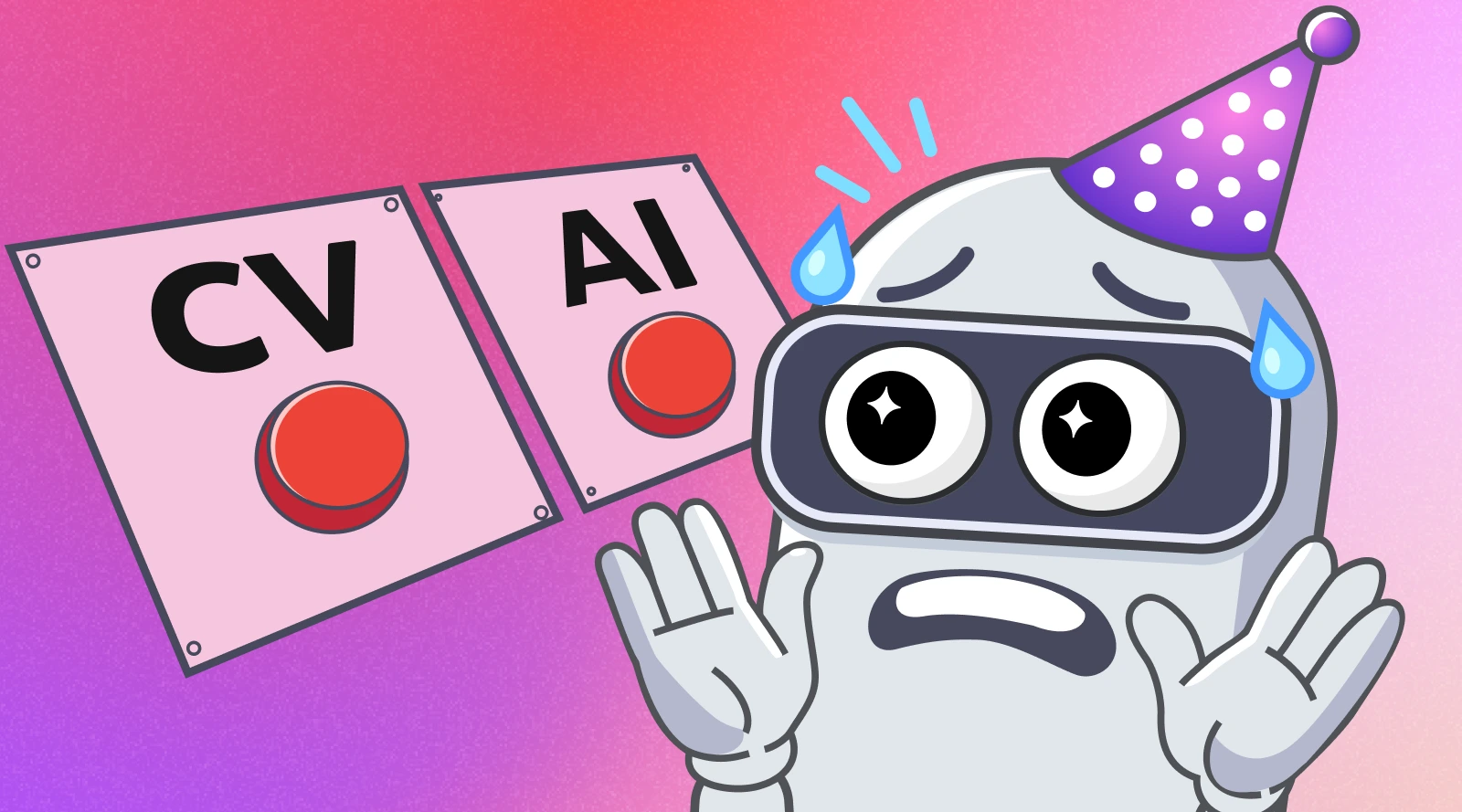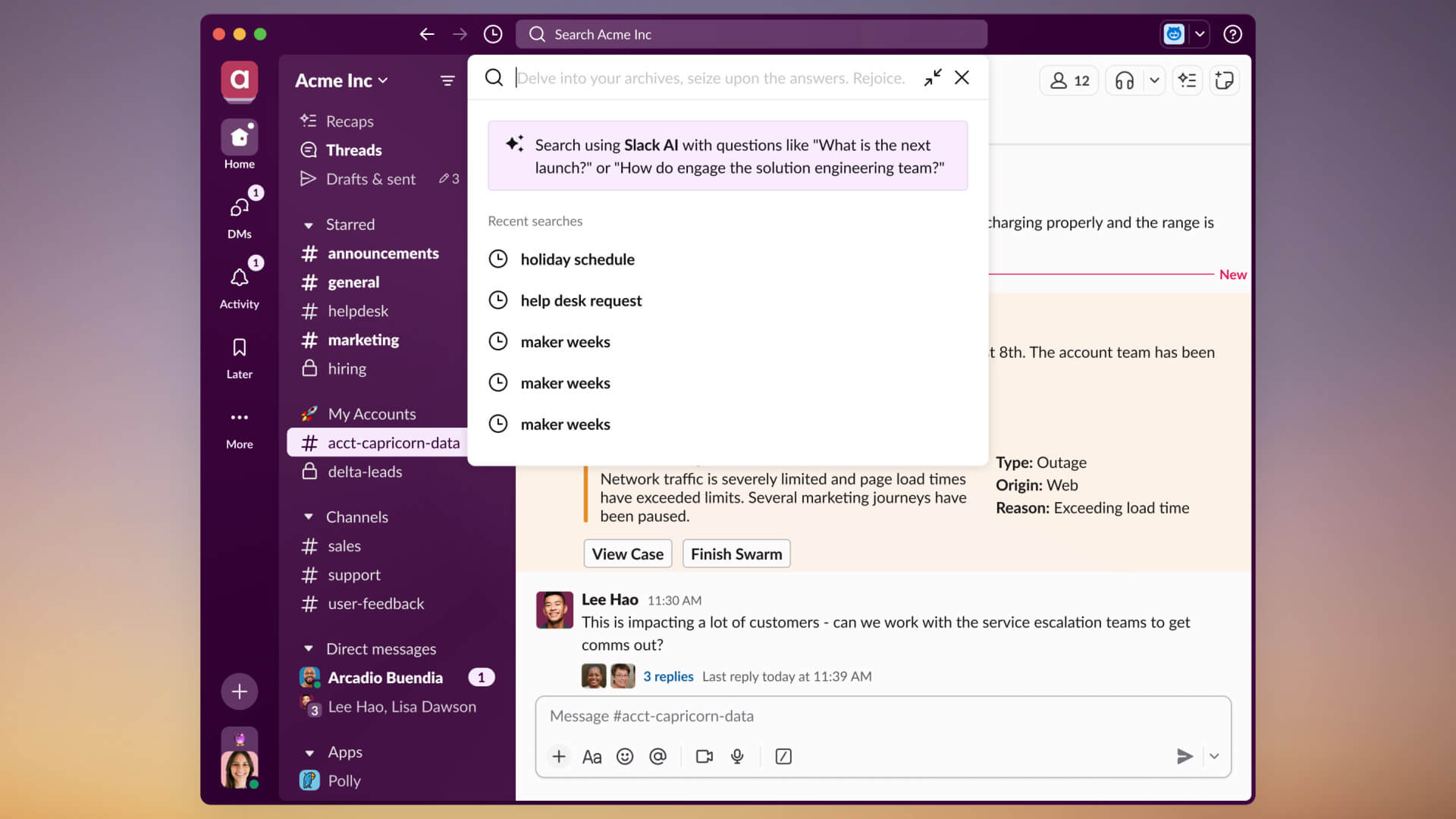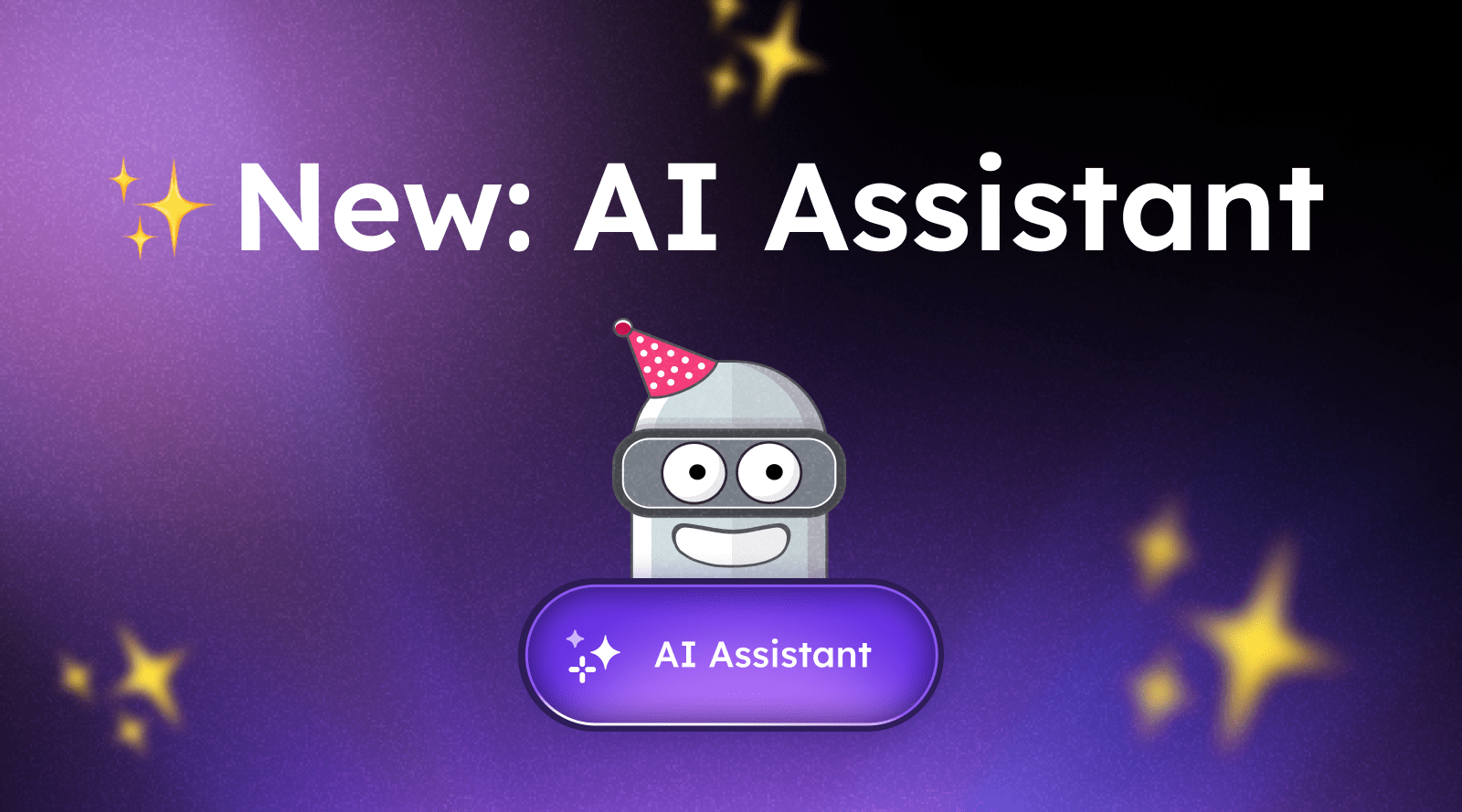AI that feels human: 7 Slack tools HR and People teams will love

As of now, AI is not capable of taking over HR. On the contrary, it’s here to take the repetitive, logistical noise out of your day so you can focus on the people side of People Ops.
And because Slack is already where your team talks, celebrates, and gets things done, it’s becoming the natural home for lightweight, human-friendly AI.
From summarizing hiring calls to rewriting policy announcements in a friendlier tone, here are seven genuinely useful AI tools that make HR smoother, kinder, and more connected.
1. Slack AI (sure!) – smarter communication and instant clarity
What it does:
Slack AI brings built-in intelligence to the Slack workspace, helping you summarize conversations, search smarter, and stay informed without scrolling through endless threads.
It automatically generates channel or thread summaries, creates daily recaps, and provides AI-powered search answers with citations so you can get context instantly.
You can ask natural questions like “What decisions were made about onboarding this week?” and Slack AI will return a concise answer, pointing to the exact messages where it came from.
All processing happens securely within Slack’s trusted enterprise environment, ensuring data stays private and compliant.
How HRs use it:
HR leads use Slack AI to summarize a week of #recruiting or #people-ops discussions and share key updates in minutes.
People Partners quickly catch up on policy threads or performance-cycle discussions without rereading hundreds of messages.
Team members type natural queries like “What are the latest benefits enrollment deadlines?” and get verified answers from messages and files.

Why it matters:
Slack AI is probably the easiest way HR teams informed and aligned: even across multiple time zones or projects.
It reduces noise, accelerates onboarding, and ensures critical decisions don’t get lost in the scroll.
Alternatives: Glean, Guru, Notion Q&A
2. BirthdayBot + its AI Assistant — automate the thoughtful touches
What it does:
BirthdayBot for Slack is the ultimate team recognition assistant, helping companies celebrate birthdays, custom events, work anniversaries, and new hires — perfect for keeping both remote and on-site teams connected.
It runs automatically in any Slack channel(s), with ready-to-use templates in multiple styles and languages, or fully customizable messages, GIFs, and formats that match your company’s tone.
With the AI Assistant, you can onboard by chat: add birthdays and hire dates, update them, get stats, tweak up workspace and personal settings for reminders, or even draft personalized messages.
It also powers Gift Cards — global brand-choice digital gifts available in 70+ countries, no shipping or timezone drama.
How HRs use it:
Distributed teams: The AI Assistant helps to populate birthdays and onboard quickly.
Settings: It informs where to find the necessary button in the menu and leads to it.
Inspiration: Use BirthdayBot AI in a sidebar to create unique tailored messages for employees to be sent in DMs.
Why it matters:
AI keeps your culture personal, not performative: it automates reminders, not relationships.
Alternatives: Pyn, Donut, CultureAmp
3. tl;dv — AI meeting notes that land straight in Slack
What it does:
tl;dv connects with Google Meet, Zoom, and Microsoft Teams to record, transcribe, and summarize meetings.
With the Slack integration enabled, every meeting’s transcript, highlights, and key moments are automatically posted into a specified Slack channel.
During a meeting, if you @tag a colleague, tl;dv will notify them after the meeting to review that moment.
It supports integrations with many other apps (CRMs, project tools), so meeting data can flow into your existing stack.
How HRs use it:
After an HRBP sync, tl;dv posts a summary into #people-updates with a link to transcript and the moments flagged by participants.
During hiring debriefs, the team sees a summary plus timestamped candidate quotes in Slack — no one has to manually pull up notes.
Why it matters:
It bridges meeting content back into Slack so insights don’t stay buried in video or docs.
Reduces duplication: participants see the same source of truth rather than each rewriting notes.
The @tag feature ensures critical moments get attention without chasing people later.
Alternatives: Otter.ai, Fireflies.ai, Fathom
4. Polly — lightweight AI surveys and feedback in Slack
What it does:
Polly allows you to create polls, surveys, and pulse checks directly within Slack using commands like /polly or via its dashboard.
It supports multiple question types: multiple choice, numerical scales (1–5, 0–10, NPS), open-ended questions, ranking, emoji ranking, etc.
You can schedule recurring or “rotating” pollys: set up a long employee survey but send just one question each week.
It shows results in real time (in Slack or web dashboard) and allows export (CSV).
Polly supports anonymity controls and external voting (web links) so people outside Slack can respond.
How HRs use it:
After a benefits rollout, HR sends a 2-question pulse via Polly, sees results immediately, and identifies “Top concern: clarity on dependents.”
A manager runs a monthly “mood check” poll in their team’s Slack channel using a numerical scale question to gauge stress or engagement levels.
Why it matters:
Because pollys live where people already are (Slack), response rates tend to be higher than email surveys.
Quick feedback loops help HR spot issues before they swell.
Rotating questions reduces survey fatigue while maintaining regular insight.
Alternatives: Officevibe, CultureAmp, Leapsome
5. Guru AI — instant HR answers, minus the inbox chaos
What it does:
Guru connects your internal documentation (wikis, docs, knowledge bases) and surfaces verified answers inside Slack when someone asks a question.
It uses AI to suggest answers, but ties them back to verified sources so that responses are consistent and traceable.
Guru also tracks analytics: which answers are used most, which searches fail, and what topics may need content updates.
How HRs use it:
In onboarding, new hires ask Guru “What’s our parental leave policy?” and get the canonical document/link without needing to message HR.
HR looks at analytics to see that “flex time policy” is heavily searched, meaning the policy might need clarifying or communication.
Why it matters:
It reduces repetitive questions to HR and helps scale knowledge dissemination.
Ensures consistency: everyone sees the same “official” answer, avoiding conflicting versions floating around.
Alternatives: Notion Q&A, Glean, Slite
6. Loom AI — async updates with warmth and clarity
What it does:
Loom captures video + screen for a quick share, then generates transcripts automatically.
It provides AI-powered summaries or highlights for videos (e.g. title, key moments) so viewers can skim or jump to relevant parts.
These videos (with summaries) can be shared in Slack threads or links, making them accessible without forcing synchronous meetings.
How HRs use it:
A People Partner records a 2-minute video walking through the new time-off system; the transcript and summary auto-post in Slack so people can read it quickly.
HR leads produce video “policy refreshers” instead of long emails, letting team members consume in their own time.
Why it matters:
Combines the expressiveness of video with accessibility via transcripts.
People choose how to consume: watch, skim via summary, or read the transcript.
Alternatives: Claap, Bubbles, Vimeo Record
7. Fireflies.ai — searchable conversations, zero note-taking
What it does:
Fireflies.ai joins meetings (Zoom, Google Meet, Teams) to record, transcribe in real time, and generate AI summaries and action items.
With its Slack integration, meeting recaps, transcripts, and insights are automatically sent to a designated Slack channel or DMs.
It supports Slack Huddle transcription: Fireflies can automatically capture and transcribe Slack Huddles (beta feature).
It allows you to search across past transcripts and highlight key moments, making meetings an indexed, queryable resource.
How HRs use it:
HR uses Fireflies to ensure candidate interview discussions and debriefs are fully captured, searchable, and shareable with panel members. During informal Slack Huddles (e.g., quick check-ins), Fireflies transcribes the conversation so nothing is lost and follow-ups can be tracked in Slack.
Why it matters:
Meetings become living documents rather than ephemeral discussions. Slack’s ephemeral chat + Fireflies’ transcripts ensure nothing important slips through the cracks.
Huddle transcription brings value to the moments you’d otherwise not record.
Alternatives: Otter.ai, Fathom, MeetGeek.ai
Why HR teams are turning to “lightweight AI” instead of almighty ChatGPT?
The best Slack-integrated AI tools aren’t the heavy, enterprise kind, they’re the invisible ones that quietly make things better. They are always at hand right in Slack. They fit into your workflow the same way a helpful colleague does — by anticipating what’s next.
AI summaries (like tl;dv and Fireflies) cut meeting clutter.
AI surveys (like Polly) make feedback continuous, not quarterly.
AI writing helpers (like Compose.ai) help HR find the right words, faster.
AI culture tools (like BirthdayBot) make remote recognition feel natural, not forced.
Each one saves minutes that add up to hours: and hours that add up to more presence, more empathy, more focus.
A humble note about BirthdayBot for Slack

BirthdayBot is the all-in-one celebration and culture automation app for Slack with dozens of features and a 30-day free trial.
Explore the product here: https://birthdaybot.io/getting-started/